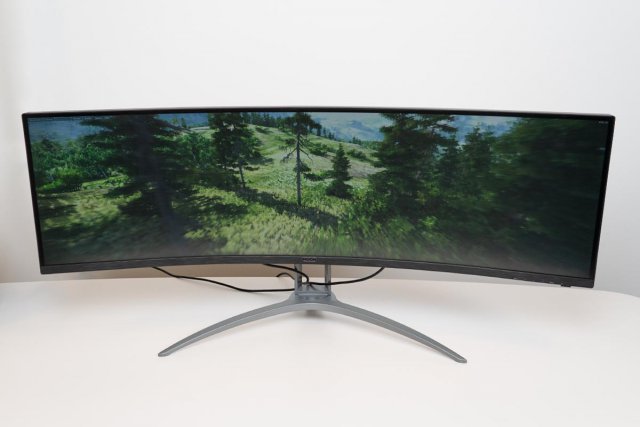Hardware: Gaming Monitors Compared – Special

Pure luxury or real gaming fun added value? Gaming monitors in the comparison test
Current smart TVs actually fit the requirements of a PC gamer quite well. But not everyone wants to park their gaming PC in the living room, and there is no more room in the “workroom” for a second TV. Also, a TV cannot offer the same combination of low response time and high refresh rate as a gaming monitor. Although newer Smart TVs offer a refresh rate of 120 Hertz (Hz) – a dream for console users – the fun is just beginning for many PC gamers. Especially when it comes to milliseconds in competitive shooters like Call of Duty – Modern Warfare II or the classic CS:GO, your own monitor can’t actually be fast enough.
Even a good office screen is not necessarily an alternative to a gaming monitor, since other priorities are set for work. The refresh rate is usually 60 Hz, which is completely sufficient to move Excel or Word windows smoothly. But that’s not enough for gaming. High color fidelity and color space coverage are important for image editing and may play an important role for photographers or graphic designers, but take a back seat when you delve into games like NFS: Unbound or The Callisto Protocol.
Different philosophies
In the test, five candidates from BenQ, AOC, Medion and Dell compete against each other. Even at first glance, the devices differ greatly, but what they have in common is a fast response time, a refresh rate of at least 120 Hz and the integration of gaming-specific extras such as different color profiles for different game genres or a crosshair that can be displayed.
The Dell Alienware AW3423DW and the AOC AGON AG493UCX are strikingly different
. Both monitors are so-called ultra wide screens. These devices say goodbye to the classic 16:9 aspect ratio in favor of an even wider picture. 21:9 (for the Alienware) or even 32:9 (for the AGON) are the new standard here. In the office, a single monitor replaces two standard format screens. Much more important for gamers, however, is immersion, i.e. the feeling of actually being in the game, which an ultra wide display can offer. This is also supported by the fact that ultra wide monitors are curved. The curvature is intended to ensure that the viewing distance from the monitor level is the same at the edges as it is in the middle of the monitor. In addition, when playing, you actually feel like you are sitting more in the game than in front of it.
The other three tested 16:9 gaming screens, on the other hand, look pretty normal. This is where the difference lies in the details: All devices have a 32-inch diagonal, but only Medion uses a cheaper 165 Hz QHD panel with 2,560 x 1,440 pixels in the Erazer Spectator X10 (MD 22094). In contrast, the BenQ Mobiuz EX3210U and the AOC AGON AG324UX both use a high-resolution 144 Hz UHD display with 3,840 x 2,160 pixels.
Reference-www.4players.de